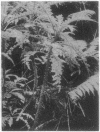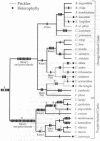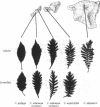Abstract
The evolution of thorn-like structures in plants on oceanic islands that lack mammalian and reptilian herbivores is puzzling, as is their tendency toward juvenile-adult leaf dimorphism. We propose that these traits arose in Cyanea (Campanulaceae) on Hawaii as mechanical and visual defenses against herbivory by flightless geese and goose-like ducks that were extirpated by Polynesians within the last 1600 years. A chloroplast DNA phylogeny indicates that thorn-like prickles evolved at least four times and leaf dimorphism at least three times during the last 3.7 million years. The incidence of both traits increases from Oahu eastward toward younger islands, paralleling the distribution of avian species apparently adapted for browsing. The effectiveness of visual defenses against avian browsers (once dominant on many oceanic islands, based on the vagility of their ancestors) may provide a general explanation for insular heterophylly: the other islands on which this previously unexplained phenomenon is marked (New Zealand, New Caledonia, Madagascar, Mascarene Islands) are exactly those on which one or more large flightless avian browsers evolved.
Full text
PDF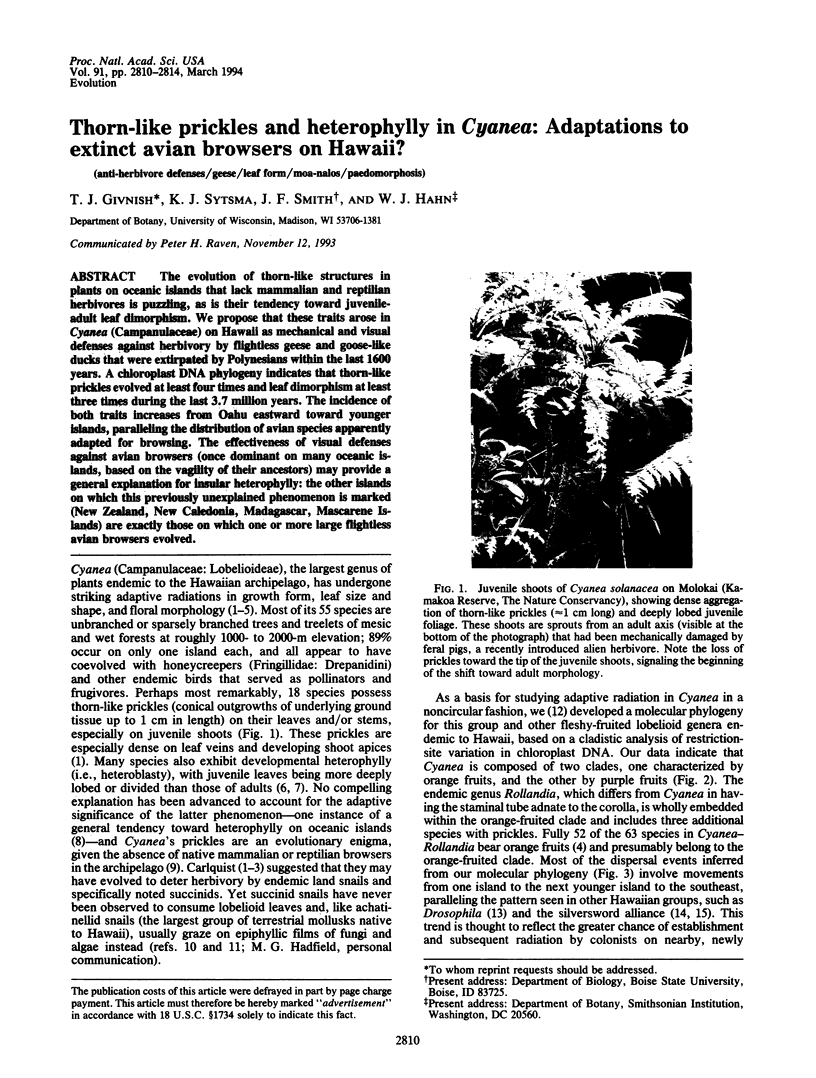
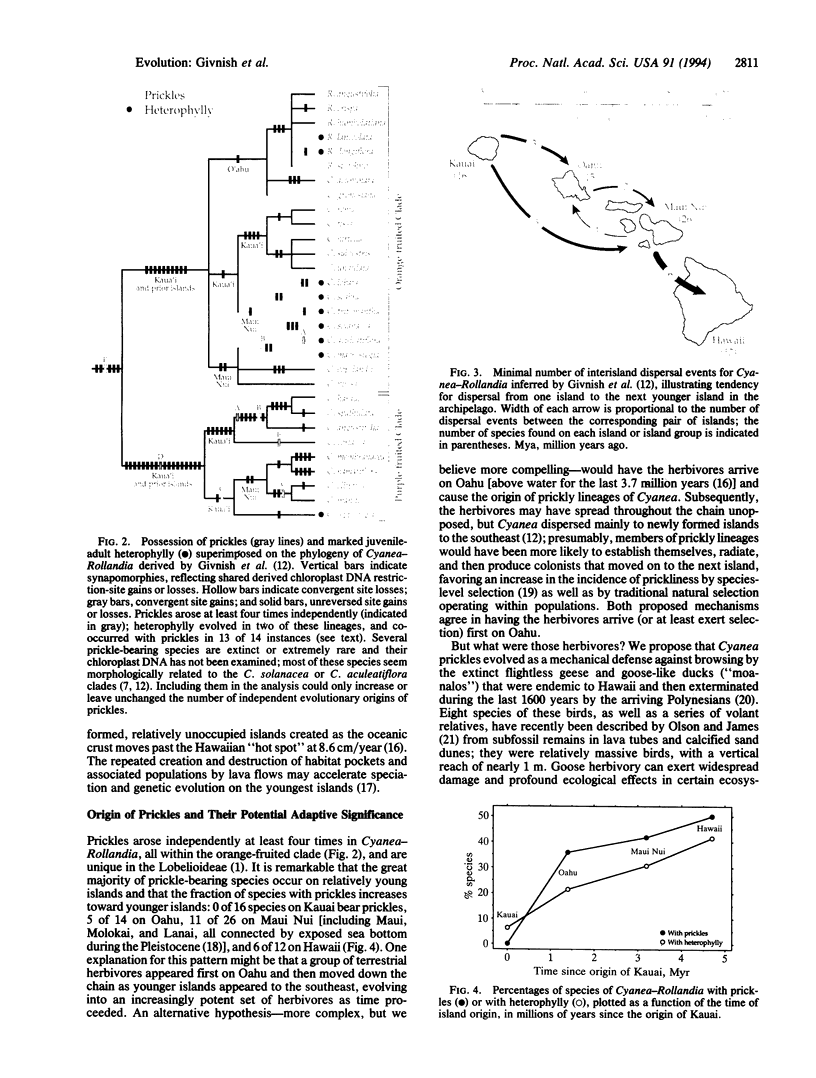
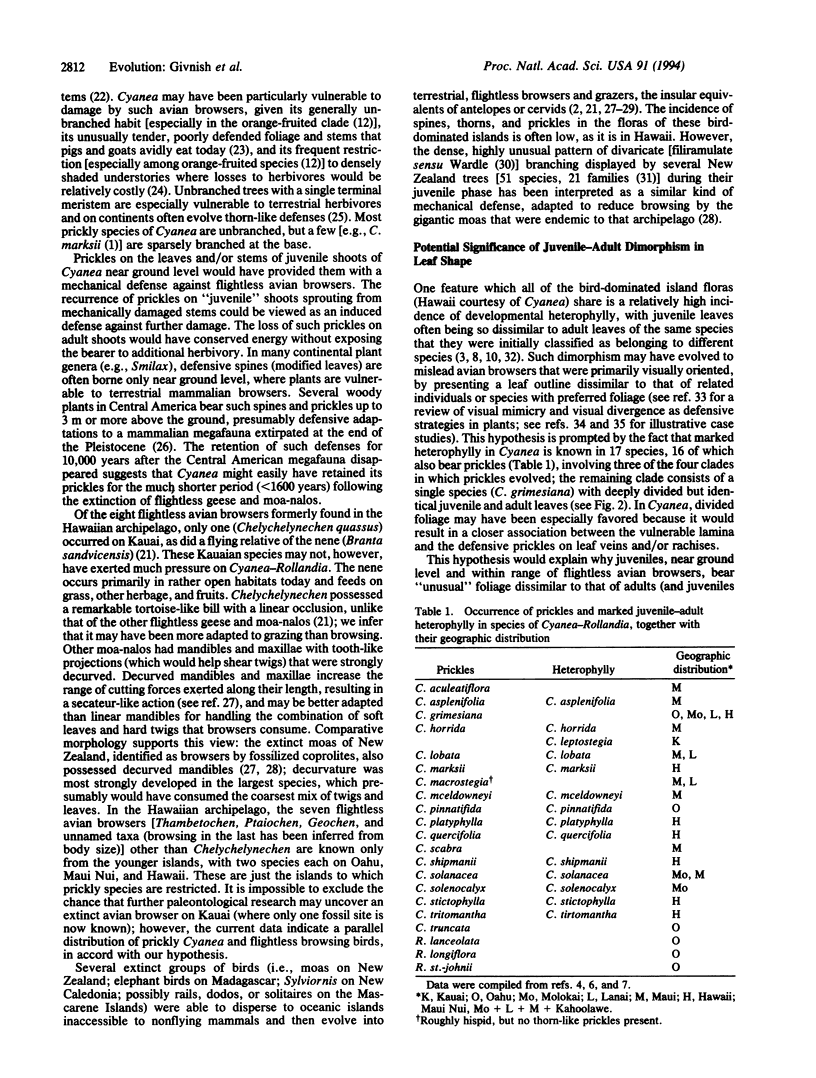
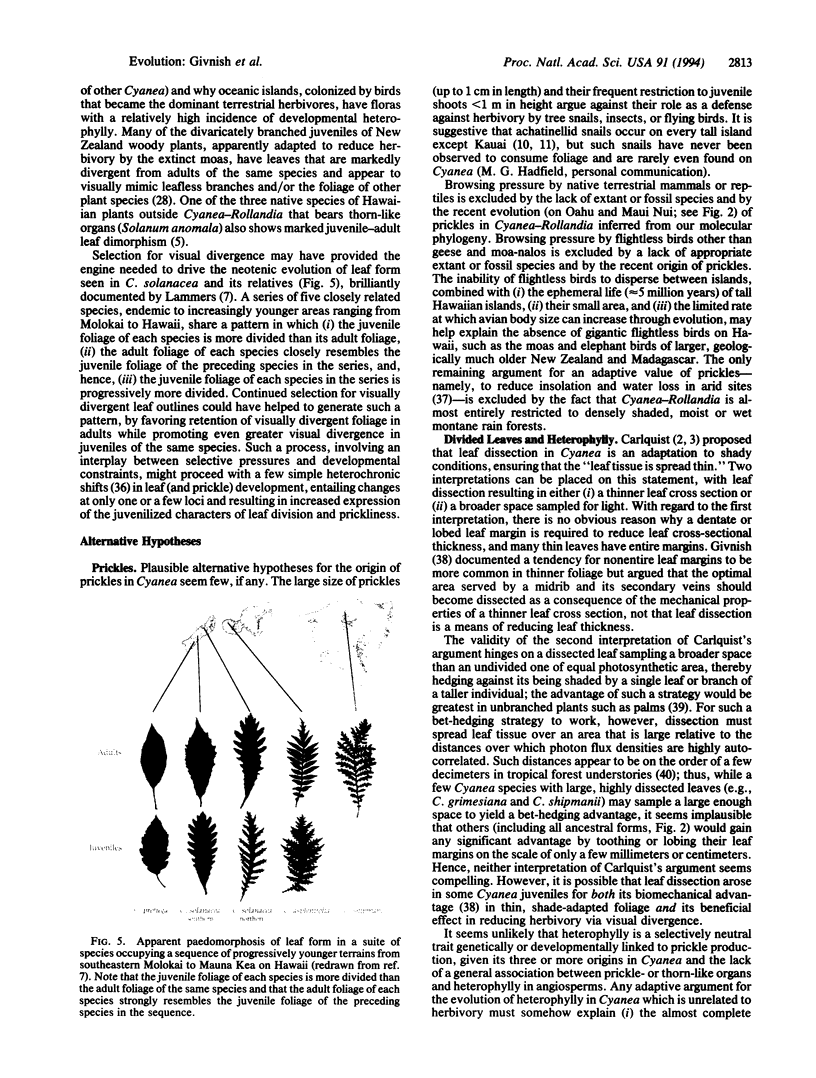
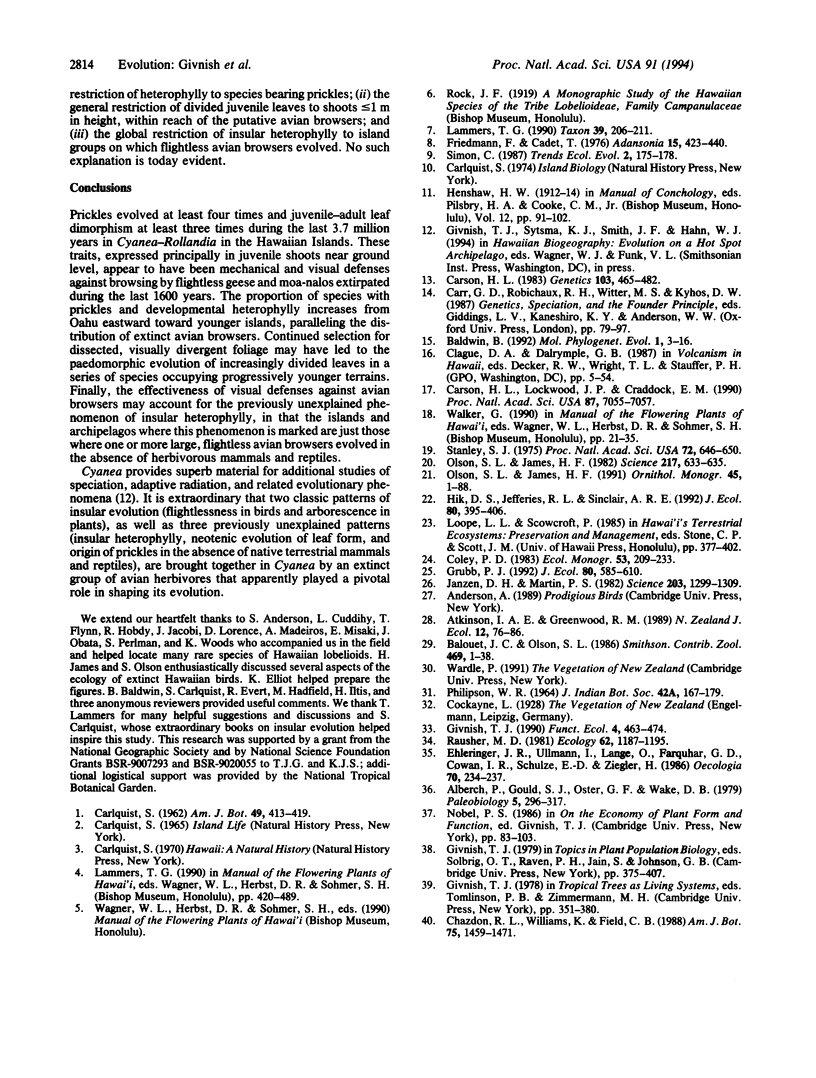
Images in this article
Selected References
These references are in PubMed. This may not be the complete list of references from this article.
- Baldwin B. G. Phylogenetic utility of the internal transcribed spacers of nuclear ribosomal DNA in plants: an example from the compositae. Mol Phylogenet Evol. 1992 Mar;1(1):3–16. doi: 10.1016/1055-7903(92)90030-k. [DOI] [PubMed] [Google Scholar]
- Carson H. L. Chromosomal sequences and interisland colonizations in hawaiian Drosophila. Genetics. 1983 Mar;103(3):465–482. doi: 10.1093/genetics/103.3.465. [DOI] [PMC free article] [PubMed] [Google Scholar]
- Carson H. L., Lockwood J. P., Craddock E. M. Extinction and recolonization of local populations on a growing shield volcano. Proc Natl Acad Sci U S A. 1990 Sep;87(18):7055–7057. doi: 10.1073/pnas.87.18.7055. [DOI] [PMC free article] [PubMed] [Google Scholar]
- Olson S. L., James H. F. Fossil birds from the hawaiian islands: evidence for wholesale extinction by man before Western contact. Science. 1982 Aug 13;217(4560):633–635. doi: 10.1126/science.217.4560.633. [DOI] [PubMed] [Google Scholar]
- Stanley S. M. A theory of evolution above the species level. Proc Natl Acad Sci U S A. 1975 Feb;72(2):646–650. doi: 10.1073/pnas.72.2.646. [DOI] [PMC free article] [PubMed] [Google Scholar]



